With a breathy start, the Catalyst Quartet plays the delicate “aria” from Bach’s “Goldberg Variations.”
In the corner, Machine Dazzle’s arm reaches out from a lumpy bed. He looks at the alarm clock, groans, and retreats back into the tangled sheets.
When the quartet plays the faster first variation, Machine leaps out of bed.
“Shit!”
With a chronic over-sleeper’s swiftness, Machine begins unfurling a long carpet. From the bed, he pulls out a series of spherical topiaries, each larger than the previous.
So that’s why it was lumpy.
Machine’s performance, called “Bassline Fabulous,” took place at the Met Museum’s “Vanderlyn Panorama Room” on Friday, Dec. 16.
The room, tucked in the American Wing, is painted like the Gardens of Versailles. It complemented Machine’s Louis XIV-inspired look: floral headpiece, white ruffled apron, and blue period shoes.
It’s been a big year for Machine Dazzle. The drag performer and fashion designer has a show, titled “Queer Maximalism,” running at the Museum of Arts and Design through Feb. 19. It includes, among other gems, Machine’s costumes for Taylor Mac’s A 24-Decade History of Popular Music.
Machine is also designing costumes for Opera Lafayette’s production of Rameau’s Io in May.
So, “Bassline Fabulous” was Machine’s first, but not last, foray into classical. And while Catalyst, the Met’s quartet-in-residence this year, played their “Goldberg” arrangement beautifully, it was hard to pay too-close musical attention through Machine’s antics.
It was nothing like Jerome Robbins’ ballet.
In the first of Machine’s morning chores, he placed a plate of donuts and a vase of hydrangeas on a folding breakfast table. He then asked an audience member to thread a pastry with one of the phallic flowers, watching the whole affair through opera glasses.
There was a let-them-eat-cake-ishness to it all. Gently mocking the older, straight-seeming, presumably wealthy audience members. Tickets, after all, cost $125.
Other antics poked fun at art activism — with duct-taped bananas, cans of tomato soup, and an enormous, phallic Elmer’s glue bottle.
The performance ended with a candlelit vigil. A nod to the past year: BLM, Club Q, Roe v. Wade.
Amidst flickering lights, Catalyst played the solemn final variation. A security guard came to clean up the pompoms, yarn, and confetti.
I almost didn’t recognize the guard as Machine out of drag. To hesitant applause, the artist-in-disguise took a triumphant bow.
I would have enjoyed Nick Cave’s “Forothermore,” at the Guggenheim through April 10, regardless. However, I enjoyed it “even more” after seeing Machine Dazzle’s performance and show.
Cave’s work, too, expresses a “queer maximalist” sensibility. Spread over three floors, “Forothermore” includes sculptures, assemblages, and video.
But it culminates with Cave’s “soundsuits,” so-named for their noisiness for the wearer. They are constructed from faux flowers, beads, plastic toys, fur, lace, you name it.
When costumes are placed in a museum, they beg for bodily interaction. When I visited on Wednesday, Dec. 28, the place was overrun with children (many playing eye spy), their forms utterly dwarfed by the mannequins.
With Cave’s soundsuits, there’s both humor and horror to the feet, which stick out Wicked Witch-like. This is echoed in his other sculptures: a pair of Nike sneakers supporting an abstraction, gramophone horns ending in arms.
There’s also a contrast between Cave’s playful art and somber labels. One recounts how Cave’s first soundsuit, made from twigs, was in reaction to Rodney King’s 1991 police beating. More recent soundsuits reference George Floyd.
Cave conceives of them as instrumental armor. “In order to be heard, you gotta make sound,” he says.
But how does this relate to “maximalism”? If, as Susan Sontag writes, “camp” converts the serious into the frivolous, Cave converts it back to serious again.

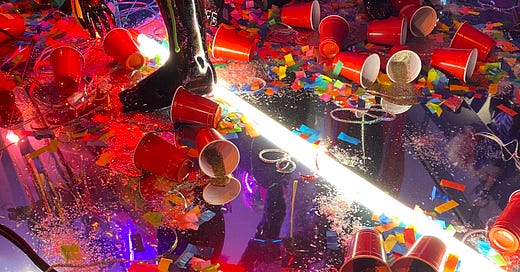


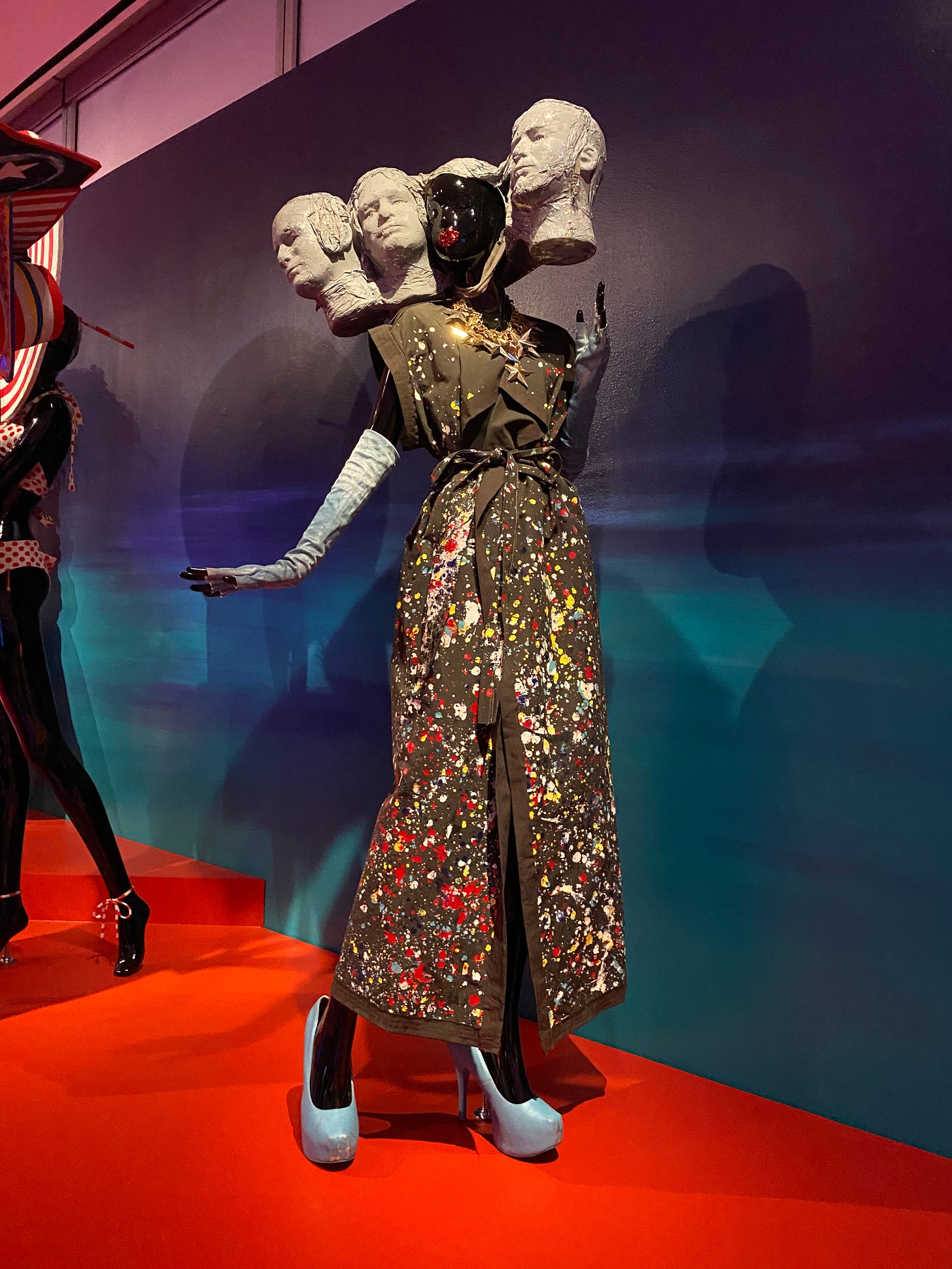
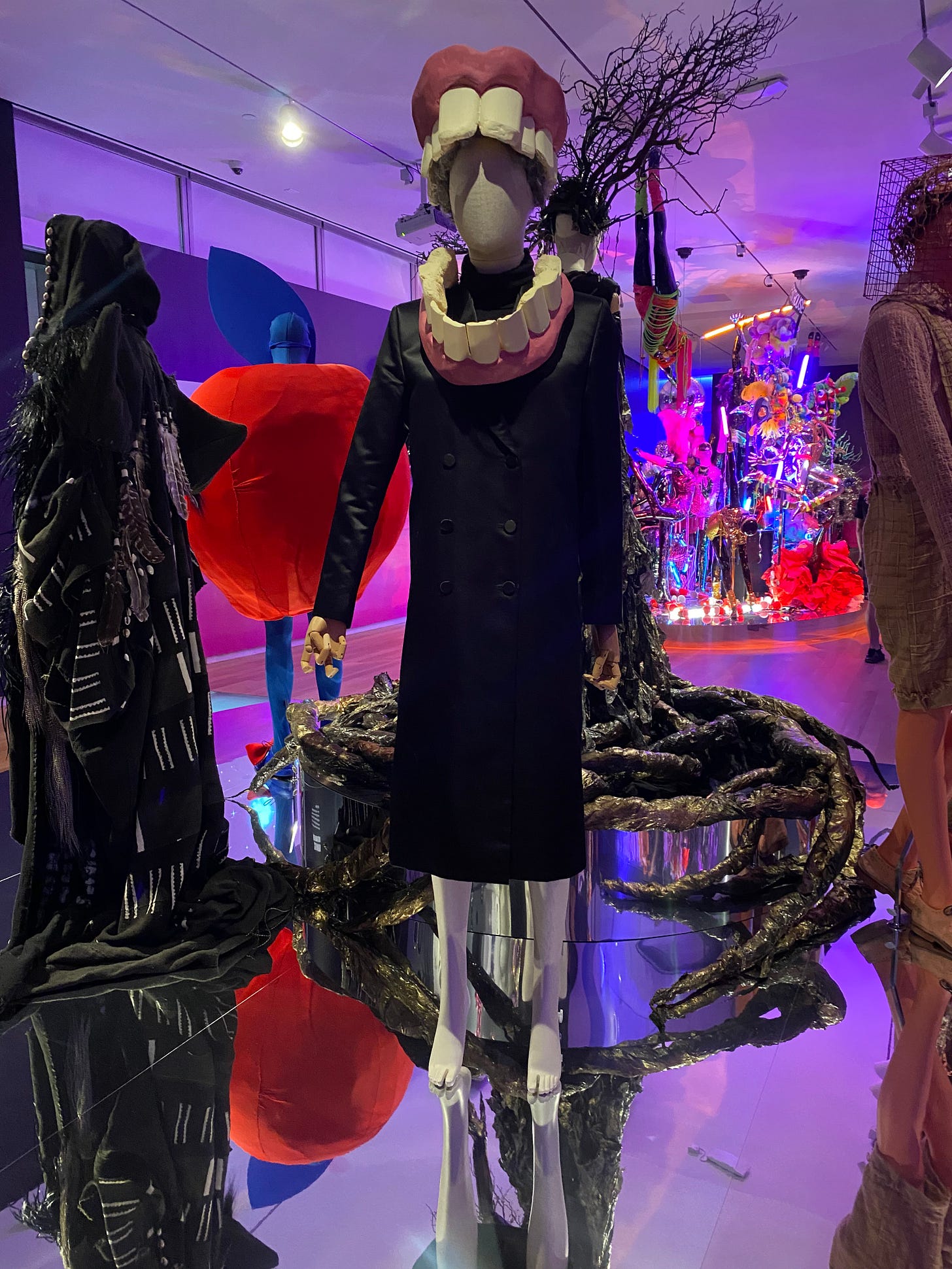

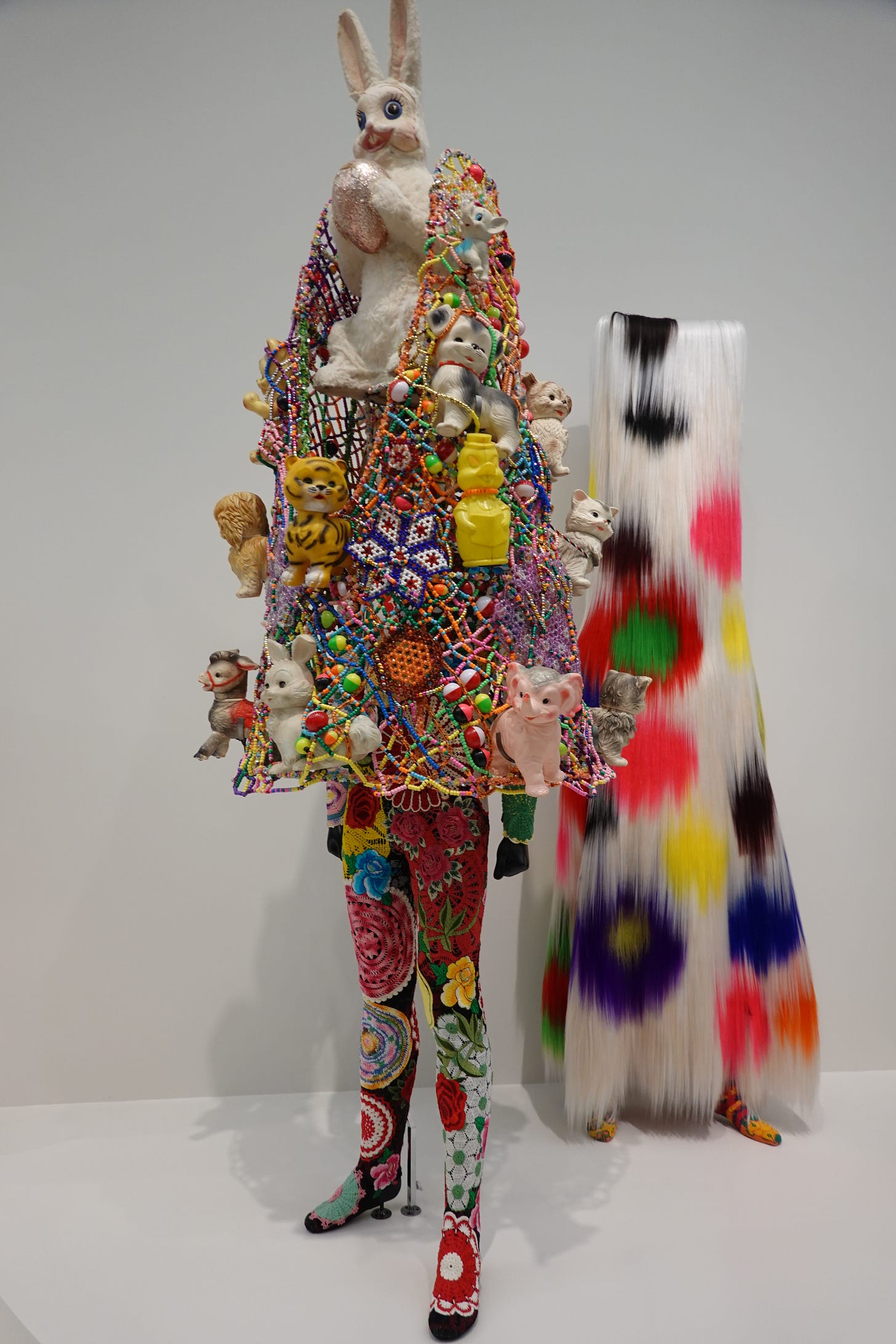
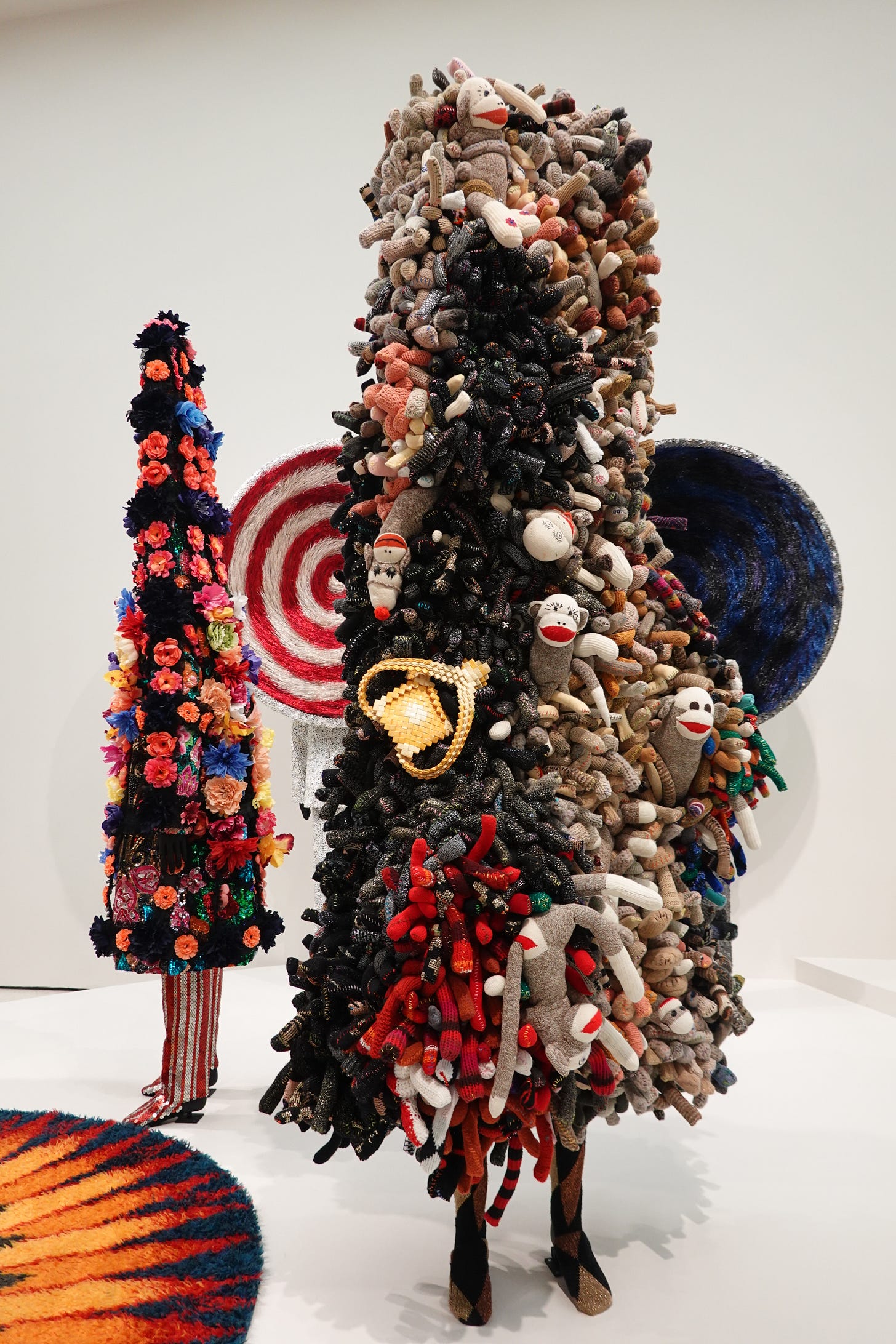
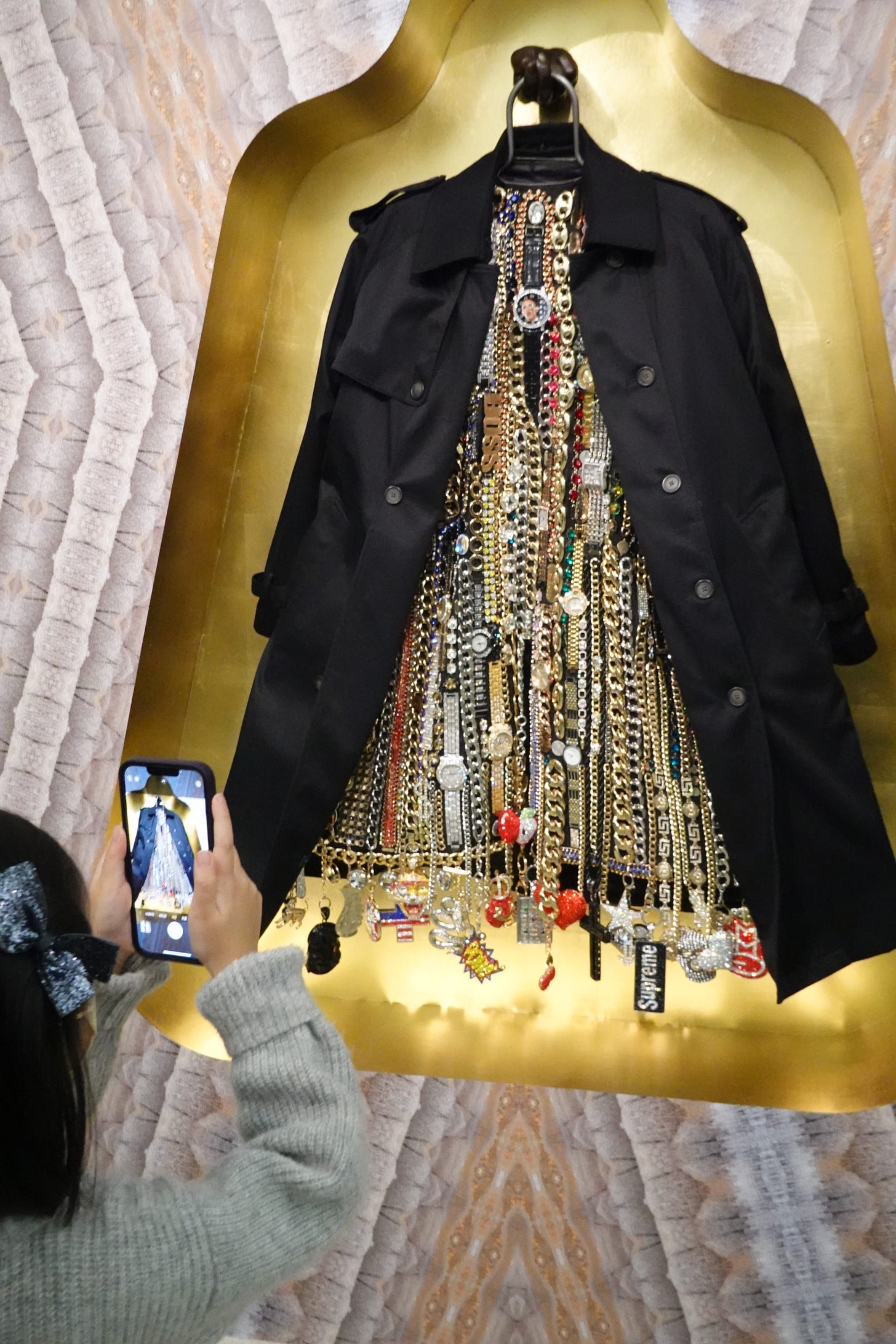
I saw Cave's show a couple of weeks ago. Powerful. Happy New Year!